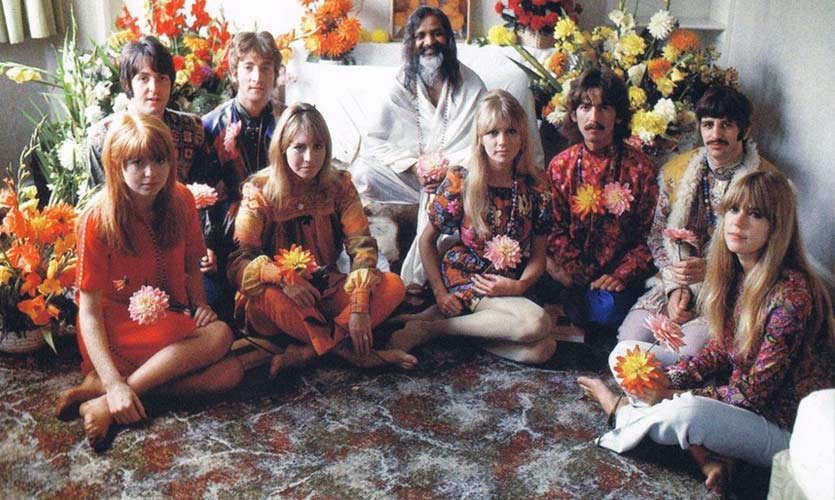In the late 1960s, at the peak of their popularity, The Beatles’ men felt disenchanted from fame, wealth and success. In The Beatles book anthology, published in October 2000, Paul McCartney said, “We’d tried for it not to go to our heads and we were doing quite well – we weren’t getting too spaced out or big-headed – but I think generally there was a feeling of: ‘Yeah, well, it’s great to be famous, it’s great to be rich – but what it’s all for?’”
The opportunity to find the answers to their disoriented state presented itself in 1967, when they attended a seminar in Wales. The seminar was conducted by Maharishi Mahesh Yogi, the pioneer of Transcendental Meditation movement, who later came to be known as the Guru of Beatles. The Beatles arrived at Maharishi Yogi’s Ashram in Rishikesh in February 1968, for a “spiritual reawakening,” accompanied by their wives, girlfriends, and managers. What was supposed to be a three-month escapade turned out to be a journey they had not quite anticipated. Each member’s commitment to the program’s discipline varied in many ways, with Ringo leaving on March 1st, after merely 10 days at the Ashram, followed by Paul at the end of March. What followed was even more tumultuous when the remaining two, John and George departed abruptly on April 12th, believing the allegations against the Maharishi about his inappropriate behaviour and conduct towards other students. Some reports also claimed that Maharishi had begun to reap advantages through their name, and they didn’t wish to continue under such circumstances. Later, after the group’s disbandment in 1970, George stated that the allegations against the Maharishi were in fact untrue and also apologised for the same.
Despite all the intense occurrences, the trip reportedly became one of their most creative phases as a band, as they wrote 48 songs in the time span, most of which made it to the White Album, which was released later in the same year. Their visit, however short it was, left everyone in the West curious about meditation, Yoga, Indian clothing, and even playing the Sitar, and numerous foreigners arrived to experience a similar lifestyle.
In the later years, the members were not quite as sour over their experience as they might have been right after the visit, especially John and George. In fact, they publicly accepted that the Maharishi had a positive influence on their minds, and staying at the Ashram felt like a “summer camp,” because all they did was eat, sleep and meditate. “I was in a room for five days meditating. I wrote hundreds of songs, and I was hallucinating like crazy,” John said in the anthology. Clad in quintessential cotton white kurtas, they would indulge in music constantly at the Ashram, with either some musical event going on or the members themselves bestowing everyone with their talents. On the other hand, Ringo couldn’t cope with the food and surroundings, while the tediousness of the meditation bothered Paul, which was partly responsible for their early departure.
While the 60s era was an utterly busy and eventful time for the Ashram, and it received global coverage, a decade later, in the late 1970s, the prominence gradually plummeted, and it was left abandoned for over three decades. In the 1990s, several trespassers began leaving graffiti on the walls of the site, in honour of The Beatles, before it was eventually taken over by the local forestry department in the early 2000s, and turned into a tourist attraction in December 2015. The Beatles Ashram, or Chaurasi Kutia, as it is popularly known today, also plans to curate a Beatles museum there, making it an even bigger attraction for Indian as well as foreign travellers.
Read more: Internationally-Acclaimed ‘Rockumentary’ Showcases Indian Rock Music’s Evolution










